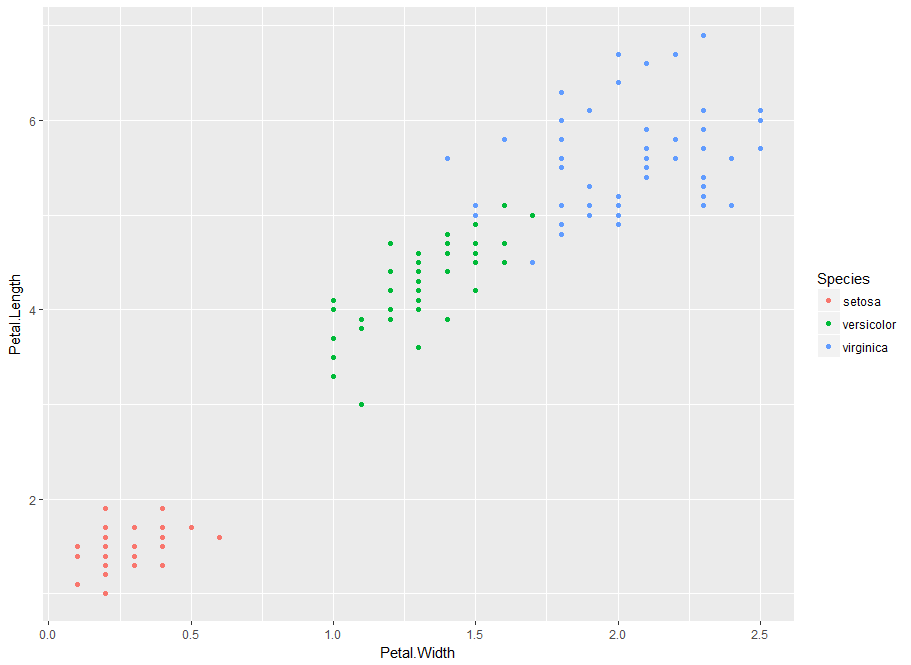Multiclass problems
Support Vector Machines in R

Kailash Awati
Instructor
The iris dataset - an introduction
- 150 measurements of 5 attributes
- Petal width and length - number (predictor variables)
- Sepal width and length - number (predictor variables)
- Species - category: setosa, virginica or versicolor (predicted variable)
- Dataset available from UCI ML repository
Visualizing the iris dataset
- Plot petal length vs petal width.
library(ggplot2)
# Plot petal length vs width for dataset, distinguish species by color
p <- ggplot(data = iris,
aes(x = Petal.Width,
y = Petal.Length,
color = Species)) +
geom_point()
# Display plot
p

How does the SVM algorithm deal with multiclass problems?
- SVMs are essentially binary classifiers.
- Can be applied to multiclass problems using the following voting strategy:
- Partition the data into subsets containing two classes each.
- Solve the binary classification problem for each subset.
- Use majority vote to assign a class to each data point.
- Called one-against-one classification strategy.
Building a multiclass linear SVM
- Build a linear SVM for the iris dataset
- 80/20 training / test split (seed 10), default cost
library(e1071)
# Build model
svm_model <- svm(Species ~ .,
data = trainset,
type = "C-classification",
kernel = "linear")
- Calculate accuracy
pred_train <- predict(svm_model, trainset)
mean(pred_train == trainset$Species)
0.9756098
pred_test <- predict(svm_model, testset)
mean(pred_test == testset$Species)
0.962963
Time to practice!
Support Vector Machines in R

